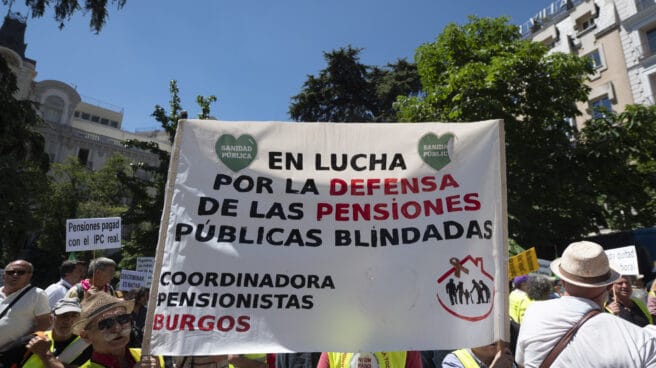

Demonstration of pensioners before the Congress of Deputies.
This week, 30 young people under the age of 25 locked themselves in a local and went on a hunger strike. They protest against their salary, which does not reach 1080 euros, despite how much they studied.. The event took place in one of the most prosperous autonomous communities in Spain, with the highest level of industrialization and with a per capita income of 35,621 euros.
The government has just approved a reform that will put an end to those wages. But to reach this amount, we will have to wait a few years. Meanwhile, these young people have no choice but to organize protests, even though they are already in the media spotlight. keyword all digital newspapers.
The youth unemployment rate under the age of 25 is 29.26%., according to the Active Population Survey (EPA). This is a rate that doubles the overall rate of 12.87% at the end of 2022. Unemployment is rampant among this generation, who, when they work, also receive lower wages than the rest of the population. The average salary in 2021 was 1,234.9 euros compared to 2,348.5 euros received by workers aged 55 and over.
After childhood, young people are the second group with the highest risk of poverty. Every third young person is in this situation. Of the total number of working young people, one in four is at risk of poverty and social exclusion. This generation is no longer a no-no, only 1.6% of young people do not work and do not study, compared with 32.4% study and work at the same time.
We don’t know about these young people under 25 whether they have an iPhone, whether they share an apartment, whether they are someone’s children, grandchildren or parents. Neither the hairstyle nor the clothes they wear surpass them.
“Of the total number of working young people, one in four is at risk of poverty and social exclusion”
I’m going to let you in on something: the young people who have locked themselves in one place in Bilbao this week are not young. pensioners. And there is no state reform to raise wages, this is a reform of the pension system. Intergenerational solidarity: a wage surcharge for workers to pay pensions.
This is a collective that is often measured by the votes it casts. It’s not strange to hear “in that there are 9 million voters”. Pensions are a priority policy for any government, and before one of the biggest reforms in the history of Spain, when legislation is passed to improve the lives of pensioners, a hunger strike began.
The protest is legal. No one should make ends meet because of lack of money. The pensioners who called for the mobilization in Euskadi ask nothing more than that the minimum pension is 1,080 euros. It should be remembered that the interprofessional minimum wage (MW) is set at the same amount, with which the employer refused to agree.
Times are another matter. Has it occurred to anyone to call a demonstration on the day when the historic statements of the protesters will be approved? Perhaps a doctors’ strike when more resources are allocated to health care? The Council of Ministers has just given the green light to a reform that they say will guarantee the sustainability of the pension system. And not only that, but also the desire to ensure that minimum pensions reach 60% of the average wage by 2027.
No one can imagine a group of employees in their twenties protesting over very low pay because they don’t have enough to fill a shelf in the fridge they share with three other people. As young people led the protests, the focus shifted to whether they arrived at the demonstration by train or plane. or the pants they wear were made in Bangladesh or Albacete. And if you don’t believe me, ask Greta Thunberg.
Perhaps the heterogeneity of the generation makes it difficult to consider young people as a collective when they demand something as fair as pensioners: a decent salary. However, pensioners also represent a heterogeneous group. There are pensioners who earn 3059 euros per month. But of course, “that’s what there are 9 million votes.”
Source: El Independiente